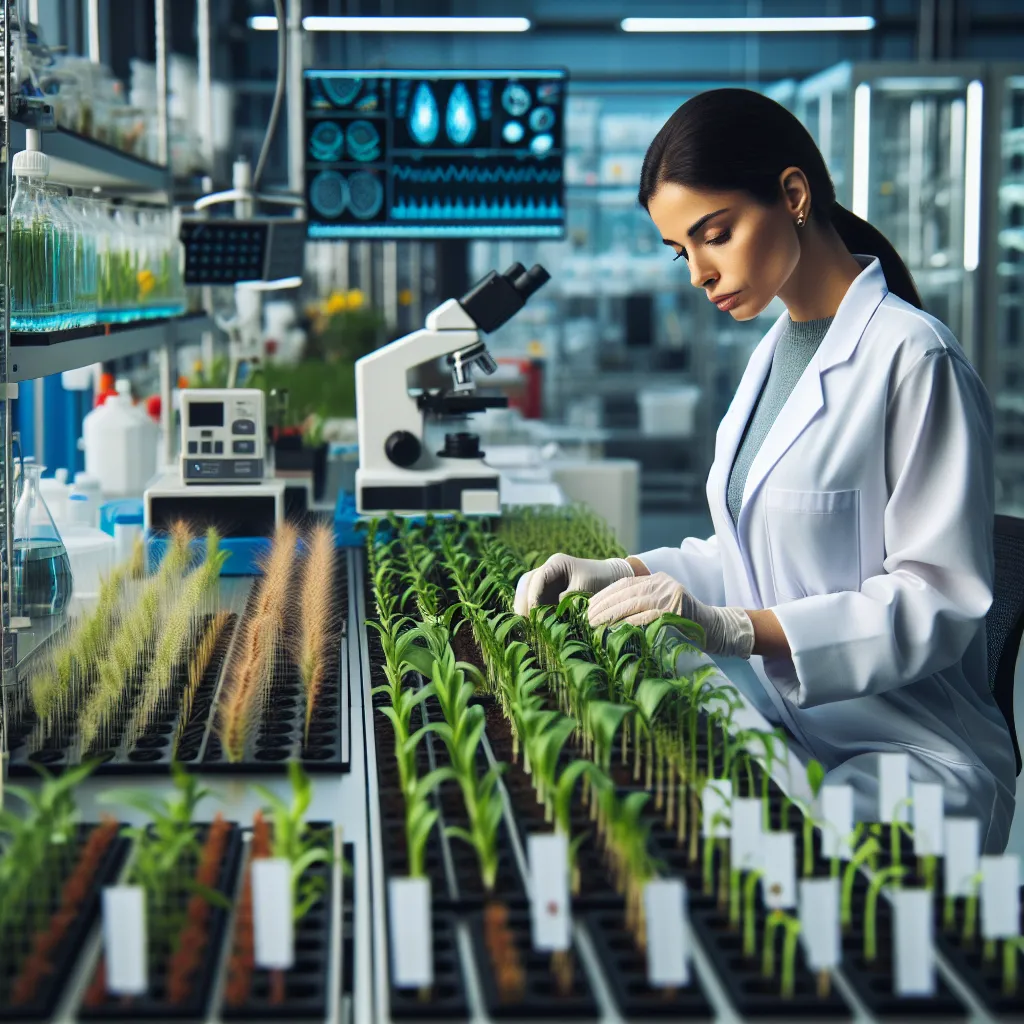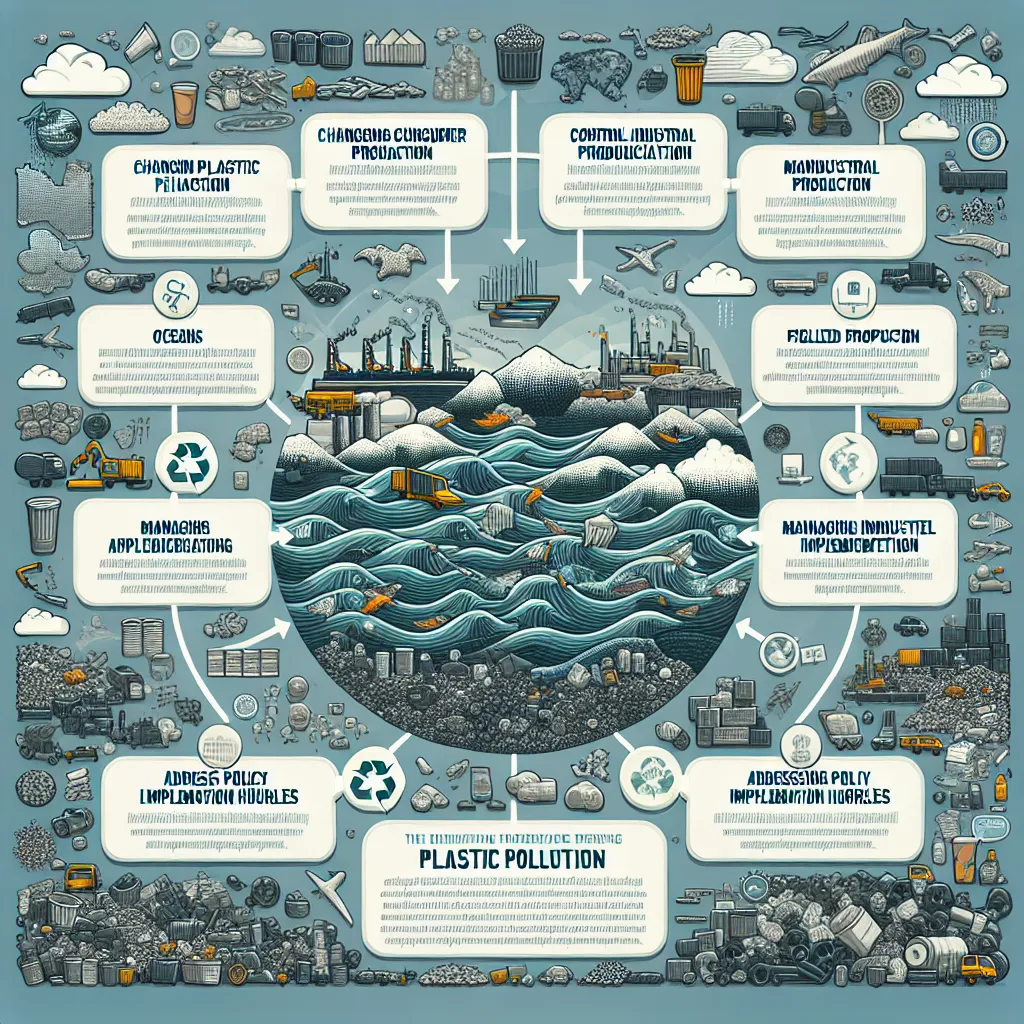Welcome to our IELTS Reading practice test focused on the fascinating topic of “How Biotechnology is Transforming Food Production”. This comprehensive test will challenge your reading comprehension skills while providing valuable insights into the cutting-edge developments in agricultural biotechnology.
 Biotechnology in Agriculture
Biotechnology in Agriculture
Introduction
Biotechnology is revolutionizing the way we produce food, offering solutions to global challenges such as food security, climate change, and sustainable agriculture. This IELTS Reading practice test explores various aspects of agricultural biotechnology, from genetic engineering to precision farming techniques. As you work through the passages and questions, pay close attention to the vocabulary and concepts related to this rapidly evolving field.
IELTS Reading Test
Passage 1 (Easy Text)
The Green Revolution 2.0: Biotechnology in Agriculture
The advent of biotechnology in agriculture has ushered in what many experts are calling the “Green Revolution 2.0”. This new era of farming is characterized by the application of genetic engineering and other advanced biological techniques to crop production. Unlike the first Green Revolution, which relied heavily on chemical inputs and mechanization, this biotechnology-driven revolution promises to enhance crop yields while reducing environmental impact.
One of the most prominent applications of biotechnology in agriculture is the development of genetically modified organisms (GMOs). These are plants whose DNA has been altered to express desirable traits, such as resistance to pests, diseases, or environmental stresses. For instance, Bt cotton, which produces its own insecticide, has been widely adopted in many countries, leading to significant reductions in pesticide use.
Another exciting area of agricultural biotechnology is the development of drought-resistant crops. As climate change leads to more frequent and severe droughts in many parts of the world, scientists are working to create varieties of staple crops that can thrive with less water. This research could prove crucial for maintaining food security in water-scarce regions.
Biotechnology is also being used to enhance the nutritional content of foods. Golden Rice, for example, has been genetically engineered to produce beta-carotene, a precursor to vitamin A. This innovation has the potential to address vitamin A deficiency, a serious health issue in many developing countries.
While the potential benefits of agricultural biotechnology are significant, it’s important to note that the technology is not without controversy. Critics raise concerns about the long-term environmental and health impacts of GMOs, as well as issues related to biodiversity and corporate control of the food supply. As a result, the adoption of biotechnology in agriculture continues to be a subject of ongoing debate and research.
Despite these challenges, it’s clear that biotechnology is playing an increasingly important role in shaping the future of food production. As global population growth puts pressure on agricultural systems, the innovations offered by biotechnology may prove essential in meeting the world’s growing food needs while minimizing environmental impact.
Questions 1-7
Do the following statements agree with the information given in the reading passage?
Write:
TRUE if the statement agrees with the information
FALSE if the statement contradicts the information
NOT GIVEN if there is no information on this
- The Green Revolution 2.0 relies more on biological techniques than chemical inputs.
- Genetically modified organisms always lead to higher crop yields.
- Bt cotton has resulted in reduced pesticide use in many countries.
- Drought-resistant crops are being developed to address the effects of climate change.
- Golden Rice was created to combat iron deficiency in developing countries.
- There is universal agreement on the benefits of agricultural biotechnology.
- Biotechnology in agriculture is expected to help meet increasing global food demand.
Questions 8-13
Complete the sentences below.
Choose NO MORE THAN TWO WORDS from the passage for each answer.
- The first Green Revolution was characterized by the use of ___ and mechanization.
- GMOs are plants that have had their ___ altered to express specific traits.
- Scientists are developing crop varieties that can grow with ___ water.
- Golden Rice has been engineered to produce ___, which is converted to vitamin A in the body.
- Some critics of agricultural biotechnology are concerned about its impact on ___.
- The adoption of biotechnology in agriculture remains a topic of ongoing ___ and research.
Passage 2 (Medium Text)
Precision Agriculture: The Convergence of Biotechnology and Digital Technology
The integration of biotechnology with digital technologies is giving rise to a new paradigm in farming known as precision agriculture. This approach leverages advanced sensors, data analytics, and biotechnology to optimize crop production at a micro level, potentially revolutionizing the efficiency and sustainability of agricultural practices.
At the heart of precision agriculture is the concept of variable rate technology (VRT). This system uses GPS-guided tractors and drones equipped with multispectral cameras to collect detailed data on soil conditions, crop health, and pest infestations across a field. This information is then analyzed using sophisticated algorithms to create precise maps of each field’s unique characteristics.
Armed with this granular data, farmers can apply inputs such as water, fertilizers, and pesticides with unprecedented accuracy. For instance, rather than applying a uniform amount of fertilizer across an entire field, VRT allows farmers to adjust application rates based on the specific needs of each area. This not only reduces waste and environmental impact but also optimizes crop growth and yield.
Biotechnology plays a crucial role in this precision approach. Genetically engineered crops designed to thrive under specific conditions can be matched to the micro-environments within a field. For example, drought-tolerant varieties might be planted in areas prone to water stress, while pest-resistant strains could be used in zones with higher insect pressure.
Moreover, advances in plant genomics are enabling the development of molecular markers that can rapidly identify desirable traits in crops. This accelerates the breeding process, allowing researchers to develop new varieties tailored to specific environmental conditions or resistant to emerging pests and diseases much faster than traditional methods.
The integration of biotechnology and digital technologies also extends to pest management. Smart traps equipped with cameras and AI-powered image recognition can identify and quantify pest populations in real-time. This information can be used to deploy targeted biocontrol agents or to guide the precise application of biopesticides, reducing the need for broad-spectrum chemical insecticides.
Another promising area is the use of CRISPR gene editing technology in conjunction with precision farming techniques. CRISPR allows scientists to make precise changes to plant DNA, potentially creating crops with enhanced nutritional profiles, improved shelf life, or better adaptation to changing climate conditions. When combined with the site-specific approach of precision agriculture, this could lead to highly optimized and sustainable farming systems.
However, the adoption of these advanced technologies faces several challenges. The high initial costs of equipment and the need for specialized knowledge can be barriers for many farmers, particularly in developing countries. There are also concerns about data privacy and security, as precision agriculture generates vast amounts of potentially sensitive information about farm operations.
Despite these hurdles, the convergence of biotechnology and digital technology in agriculture holds enormous potential. As these technologies continue to evolve and become more accessible, they could play a pivotal role in addressing global food security challenges while promoting more sustainable agricultural practices.
Questions 14-20
Choose the correct letter, A, B, C, or D.
-
What is the main advantage of variable rate technology (VRT) in precision agriculture?
A) It reduces the need for human labor on farms.
B) It allows for more accurate application of agricultural inputs.
C) It completely eliminates the use of pesticides.
D) It guarantees higher crop yields in all conditions. -
How does biotechnology contribute to precision agriculture?
A) By replacing digital technologies in farming
B) By creating uniform crop varieties for all conditions
C) By developing crops suited to specific micro-environments
D) By eliminating the need for fertilizers -
What role do molecular markers play in agricultural biotechnology?
A) They replace genetically engineered crops.
B) They speed up the process of developing new crop varieties.
C) They eliminate the need for pesticides.
D) They directly increase crop yields. -
How are smart traps used in precision agriculture?
A) To replace human workers
B) To monitor and identify pest populations
C) To genetically modify pests
D) To apply fertilizers precisely -
What is the potential benefit of combining CRISPR technology with precision farming?
A) It could lead to more sustainable and optimized farming systems.
B) It will completely eliminate the need for pesticides.
C) It will make all crops drought-resistant.
D) It will reduce the cost of farming equipment. -
What is mentioned as a challenge to the adoption of precision agriculture technologies?
A) Lack of effectiveness in improving crop yields
B) Resistance from environmental groups
C) High initial costs and need for specialized knowledge
D) Incompatibility with existing farming practices -
According to the passage, how might precision agriculture and biotechnology impact global agriculture?
A) They will completely replace traditional farming methods.
B) They could help address food security issues and promote sustainability.
C) They will only benefit large-scale industrial farms.
D) They will eliminate all environmental impacts of farming.
Questions 21-26
Complete the summary below.
Choose NO MORE THAN TWO WORDS from the passage for each answer.
Precision agriculture combines (21) and digital technologies to optimize crop production. It uses advanced sensors and data analytics to collect detailed information about field conditions. This allows farmers to apply inputs like water and fertilizers with great (22) . Biotechnology contributes by creating crops engineered for (23) conditions. Advances in plant genomics, particularly the development of (24) , are speeding up the breeding of new crop varieties. Technologies like smart traps help in pest management by providing (25) data on pest populations. Despite challenges such as high costs and data privacy concerns, the integration of these technologies could play a crucial role in addressing (26) challenges and promoting sustainable agriculture.
Passage 3 (Hard Text)
The Bioeconomy: Reimagining Agriculture in the Age of Synthetic Biology
The advent of synthetic biology is ushering in a new era in agriculture, one that promises to transform not just how we grow food, but how we conceptualize the very nature of agricultural production. This emerging field, which combines biology, engineering, and computer science, is enabling scientists to design and construct novel biological systems with unprecedented precision. As synthetic biology techniques mature, they are giving rise to a new paradigm known as the bioeconomy, where biological processes are harnessed to produce a wide range of goods and services, including food.
One of the most disruptive applications of synthetic biology in agriculture is the development of cellular agriculture. This technology allows for the production of animal products, such as meat and dairy, without the need for traditional animal husbandry. Instead, these products are grown from cell cultures in bioreactors. Cultured meat, for instance, is produced by cultivating animal muscle cells in a nutrient-rich medium. As the technology advances, it could potentially offer a more sustainable and ethical alternative to conventional meat production, significantly reducing land use, water consumption, and greenhouse gas emissions associated with animal agriculture.
Synthetic biology is also revolutionizing crop production. Scientists are now able to engineer synthetic chromosomes and even entire genomes, opening up possibilities far beyond traditional genetic modification. For example, researchers are working on creating crops with entirely new metabolic pathways, allowing plants to fix nitrogen directly from the atmosphere, thus reducing the need for chemical fertilizers. Other projects aim to enhance photosynthesis efficiency, which could dramatically increase crop yields without expanding agricultural land use.
The field of biopharming – using genetically engineered crops or animals to produce pharmaceuticals – is another area where synthetic biology is making significant inroads. Plants can be engineered to produce vaccines, antibodies, and other therapeutic proteins at a fraction of the cost of traditional pharmaceutical manufacturing methods. This could revolutionize drug production and distribution, particularly in developing countries where access to medicines is often limited.
Synthetic biology is also being applied to develop novel biofertilizers and biopesticides. By engineering microorganisms to enhance their natural abilities to fix nitrogen or combat pests, researchers are creating more effective and environmentally friendly alternatives to chemical inputs. These biological products could help reduce the environmental impact of agriculture while maintaining or even improving crop yields.
The potential of synthetic biology extends to addressing some of the most pressing challenges in global agriculture. For instance, scientists are exploring ways to engineer crops that can thrive in increasingly arid conditions brought about by climate change. This could involve creating plants with enhanced drought tolerance, or even developing entirely new crop species optimized for water-scarce environments.
Another frontier is the development of crops with enhanced nutritional profiles. Using synthetic biology techniques, researchers can potentially create plants that produce a more complete spectrum of essential nutrients, addressing malnutrition in a single crop. This approach goes beyond simply fortifying existing crops and instead reimagines the nutritional capacity of our staple foods.
The convergence of synthetic biology with other emerging technologies, such as artificial intelligence and nanotechnology, is opening up even more possibilities. AI algorithms can help design and optimize synthetic biological systems, while nanotechnology can provide new tools for manipulating biological processes at the molecular level. This interdisciplinary approach could lead to breakthroughs in areas such as smart crops that can adapt in real-time to environmental stresses or self-regulating agricultural systems that optimize their own growth conditions.
However, the rapid advancement of synthetic biology in agriculture also raises important ethical, safety, and regulatory questions. There are concerns about the potential ecological impacts of releasing engineered organisms into the environment, as well as questions about the ownership and control of these powerful new technologies. Ensuring the safety of products derived from synthetic biology, particularly in the food system, will be crucial for public acceptance and the realization of the technology’s potential benefits.
Despite these challenges, the bioeconomy powered by synthetic biology has the potential to fundamentally reshape agriculture. By providing new tools to address longstanding agricultural challenges and opening up entirely new avenues for food production, synthetic biology could play a pivotal role in creating a more sustainable, resilient, and productive global food system. As this field continues to evolve, it will likely become an increasingly important component of our strategies for feeding a growing global population in the face of climate change and resource constraints.
Questions 27-32
Complete the sentences below.
Choose NO MORE THAN TWO WORDS from the passage for each answer.
-
Synthetic biology combines biology, engineering, and ___ to design novel biological systems.
-
___ allows for the production of animal products without traditional animal husbandry.
-
Scientists are working on creating crops with new metabolic pathways to fix ___ directly from the atmosphere.
-
The field of ___ uses genetically engineered organisms to produce pharmaceuticals.
-
Researchers are developing crops that can thrive in ___ caused by climate change.
-
The combination of synthetic biology with AI and ___ is creating new possibilities in agriculture.
Questions 33-37
Choose the correct letter, A, B, C, or D.
-
According to the passage, what is a potential advantage of cultured meat?
A) It tastes better than conventional meat.
B) It is more nutritious than conventional meat.
C) It could be more sustainable than conventional meat production.
D) It is currently cheaper to produce than conventional meat. -
What is mentioned as a possible application of synthetic biology in crop production?
A) Creating plants that don’t need sunlight
B) Developing crops that can fix nitrogen from the air
C) Producing crops that grow twice as fast as normal
D) Engineering plants that can grow in salt water -
How might biopharming impact pharmaceutical production?
A) By making all drugs available for free
B) By eliminating the need for clinical trials
C) By potentially reducing the cost of producing certain drugs
D) By replacing all traditional drug manufacturing methods -
What is suggested as a potential application of synthetic biology in addressing climate change impacts on agriculture?
A) Creating plants that can reverse global warming
B) Developing crops with enhanced drought tolerance
C) Engineering plants that can grow without soil
D) Producing crops that absorb more carbon dioxide -
What concern is raised about the advancement of synthetic biology in agriculture?
A) It might make traditional farming obsolete.
B) It could lead to a decrease in global food production.
C) There are potential ecological impacts of engineered organisms.
D) It will definitely increase the cost of food for consumers.
Questions 38-40
Do the following statements agree with the claims of the writer in the reading passage?
Write:
YES if the statement agrees with the claims of the writer
NO if the statement contradicts the claims of the writer
NOT GIVEN if it is impossible to say what the writer thinks about this
-
Synthetic biology will completely replace traditional agricultural practices within the next decade.
-
The combination of synthetic biology with other technologies could lead to crops that adapt to environmental stresses in real-time.
-
The potential benefits of synthetic biology in agriculture outweigh the associated risks and challenges.
Answer Key
Passage 1
- TRUE
- NOT GIVEN
- TRUE
- TRUE
- FALSE
- FALSE
- TRUE
- chemical inputs
- DNA
- less
- beta-carotene
- biodiversity
- debate
Passage 2
- B
- C
- B
- B
- A
- C
- B
- biotechnology
- accuracy
- specific
- molecular markers
- real-time
- food security
Passage 3
- computer science
- Cellular agriculture


